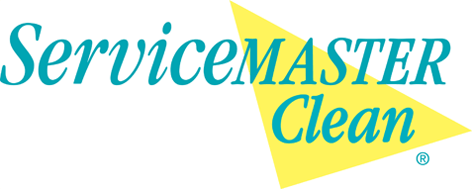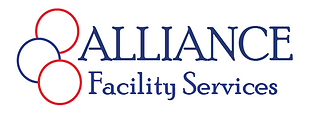Healthcare Procurement Decision-Making Based on Data: Using Analytics to Improve Supply Chain Management

October 31, 2023 by Medigroup
In the ever-evolving world of healthcare, managing the supply chain is an intricate and critical task. The seamless flow of medical supplies and equipment is essential to providing quality patient care, and in this digital age, data analytics is revolutionizing the healthcare procurement landscape. Hospitals and healthcare organizations are increasingly turning to data-driven decision-making to optimize their supply chains, reduce costs, and enhance patient outcomes. In this blog post, we will delve into the importance of data analytics in healthcare procurement and explore how it can be used to improve supply chain management.
The Significance of Data in Healthcare Procurement
Healthcare procurement is not just about buying medical supplies; it’s about making decisions that directly impact patient care. The supply chain in healthcare is complex, involving various stakeholders, tight budgets, and a constant need for critical medical equipment and pharmaceuticals. Data analytics offers a lifeline for healthcare organizations looking to streamline their procurement processes.
Data-Driven Inventory Management
Efficient inventory management is the cornerstone of a well-functioning healthcare supply chain. Through data analytics, hospitals can gain real-time insights into their inventory levels, expiration dates, and consumption patterns. By tracking these metrics, healthcare organizations can prevent overstocking, reduce wastage, and ensure they have the right supplies at the right time.
Consider this: A hospital uses data analytics to monitor the consumption of a certain medication. They notice a spike in usage during flu season and can adjust their procurement orders accordingly. This results in cost savings and ensures that the hospital is well-prepared to meet the increased demand.
Cost Reduction and Budget Optimization
Cost containment is a perpetual concern in healthcare. The data can help healthcare organizations identify cost-saving opportunities. By analyzing procurement data, hospitals can identify suppliers offering competitive prices, negotiate better contracts, and eliminate unnecessary expenses.
For instance, a comprehensive analysis of data may reveal that certain medical equipment or supplies are more cost-effective when purchased in bulk, helping the hospital make informed procurement decisions and reduce costs.
Risk Mitigation
Data analytics can also assist in identifying and mitigating risks in the supply chain. For example, through predictive analytics, hospitals can anticipate potential shortages or disruptions in the supply chain. This foresight enables them to develop contingency plans and ensures uninterrupted patient care.
Quality Assurance
The quality of medical supplies is paramount in healthcare. Data analytics can be used to monitor the quality and performance of suppliers. By tracking supplier performance data, hospitals can ensure they only work with reliable vendors, reducing the risk of substandard supplies compromising patient care.
Using Analytics for Improved Supply Chain Management
Now that we’ve established the importance of data in healthcare procurement, let’s explore how analytics can be put into practice to enhance supply chain management.
Predictive Analytics
Predictive analytics uses historical data to make informed forecasts. In healthcare procurement, this can be invaluable. Hospitals can predict when they will need to replenish specific supplies, reducing the risk of stockouts or overstocking.
For example, a hospital can use predictive analytics to anticipate the need for personal protective equipment (PPE) during a flu outbreak. This proactive approach ensures that the hospital is well-prepared, helping to protect both patients and healthcare workers.
Demand Forecasting:
Practical Methods:
- Time Series Analysis: This involves analyzing historical patient admission data to identify trends and patterns over time. Methods like moving averages and exponential smoothing can be used to make forecasts based on past admissions.
- Regression Analysis: Healthcare organizations can use regression models to understand how external factors, such as flu seasons or pandemics, influence demand. This statistical method helps quantify the relationship between variables.
Statistics:
- Mean Absolute Error (MAE) and Mean Squared Error (MSE): These metrics help assess the accuracy of demand forecasts. Lower MAE and MSE values indicate more accurate predictions.
- Confidence Intervals: These provide a range of values within which the actual demand is likely to fall. They help in estimating uncertainty in forecasts.
Supplier Performance Analytics:
Practical Methods:
- Key Performance Indicators (KPIs): Define specific KPIs related to supplier performance, such as on-time delivery rate, defect rate, and adherence to contractual terms.
- Vendor Scorecards: Create scorecards to evaluate suppliers based on their performance against predefined KPIs.
- Vendor Audits: Conduct regular audits to assess supplier quality and compliance with contractual obligations.
Statistics:
- Descriptive Statistics: Calculate metrics like mean, median, and standard deviation for KPIs to gain an overview of supplier performance.
- Control Charts: These statistical tools can help monitor supplier performance over time. Deviations from expected performance can trigger further investigation.
Data-Driven Decision-Making:
Practical Methods:
- Decision Trees: Use decision tree algorithms to make procurement decisions based on factors like cost, quality, and risk. Decision trees provide a structured approach to decision-making.
- Cost-Benefit Analysis: Quantify the costs and benefits of different procurement options to make informed decisions.
Statistics:
- Hypothesis Testing: Use statistical hypothesis testing to evaluate different procurement strategies. For example, test whether a new supplier provides a statistically significant cost savings compared to an existing one.
- Regression Analysis: Analyze historical data to determine how different variables (e.g., supplier choice) impact outcomes such as cost and quality.
In all of these areas, data analytics and statistical methods play a crucial role in healthcare procurement. They provide a systematic and evidence-based approach to decision-making, ultimately helping healthcare organizations optimize their supply chain, reduce costs, and enhance the quality of care.
Case Study: XYZ Hospital
To illustrate the impact of data-driven healthcare procurement, let’s consider the case of XYZ Hospital. This hospital implemented a data analytics solution for supply chain management, and the results were remarkable.
Inventory Management
XYZ Hospital significantly reduced excess inventory by 30% within the first year of implementing data analytics. By monitoring consumption patterns, they adjusted their order quantities and reduced instances of expired supplies.
Cost Savings
The hospital realized cost savings of $500,000 annually by renegotiating contracts with suppliers based on data-driven insights. They identified suppliers offering competitive prices, resulting in substantial reductions in procurement costs.
Supplier Accountability
By tracking supplier performance data, XYZ Hospital was able to hold suppliers accountable for on-time deliveries and product quality. This ensured a consistent supply of high-quality medical products, enhancing patient care.
Conclusion
In today’s healthcare landscape, data analytics has emerged as a powerful tool for improving healthcare procurement and supply chain management. The ability to harness the wealth of data available in the healthcare sector allows organizations to make informed decisions that positively impact patient care, reduce costs, and enhance overall efficiency.
As we’ve seen through the case study of XYZ Hospital, the implementation of data-driven supply chain management can yield substantial benefits, from reducing excess inventory and achieving cost savings to ensuring high-quality supplies and equipment.
In this context, Medigroup has been at the forefront of embracing data analytics and leveraging its insights to enhance healthcare procurement and supply chain management. Medigroup’s commitment to data-driven decision-making has not only set a benchmark but also exemplified best practices for other healthcare organizations to follow.
The future of healthcare procurement undoubtedly lies in data analytics. Hospitals and healthcare-related organizations that, like Medigroup, wholeheartedly embrace this technology and harness the insights it provides will be better equipped to navigate the challenges of a rapidly evolving healthcare environment. By doing so, they will improve patient outcomes, reduce costs, and strengthen their financial position. Data analytics is not just a tool for procurement; it’s a prescription for success in modern healthcare supply chain management, and Medigroup serves as an inspiring model in this regard.















